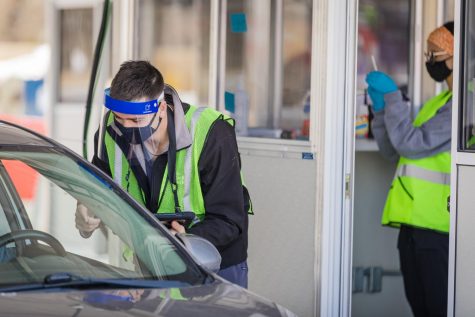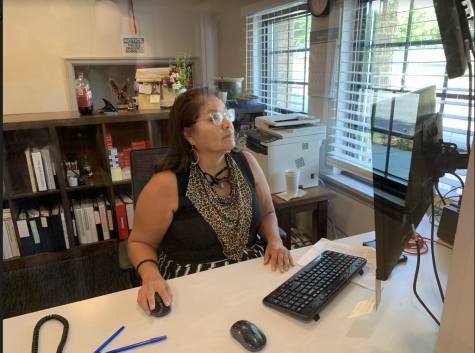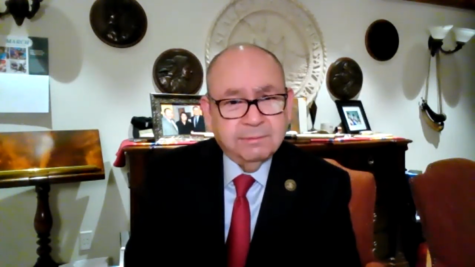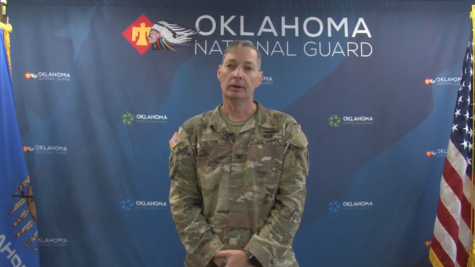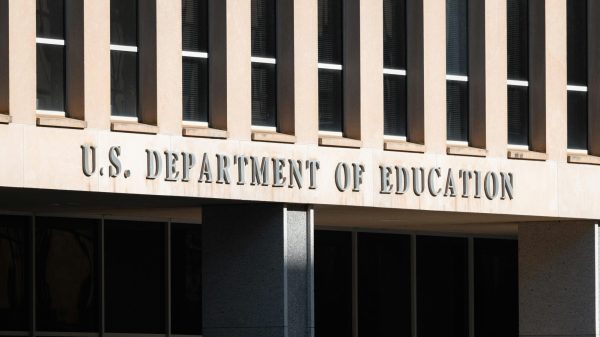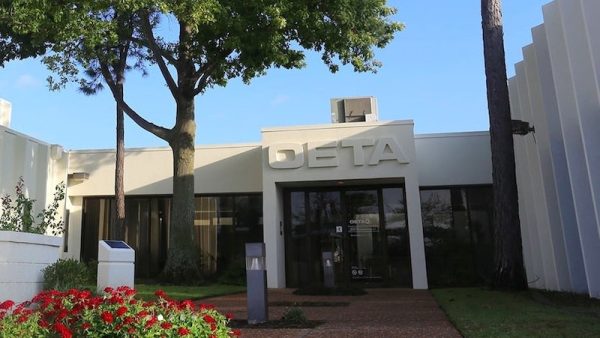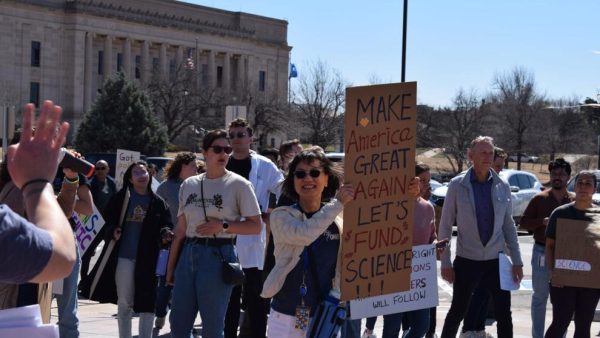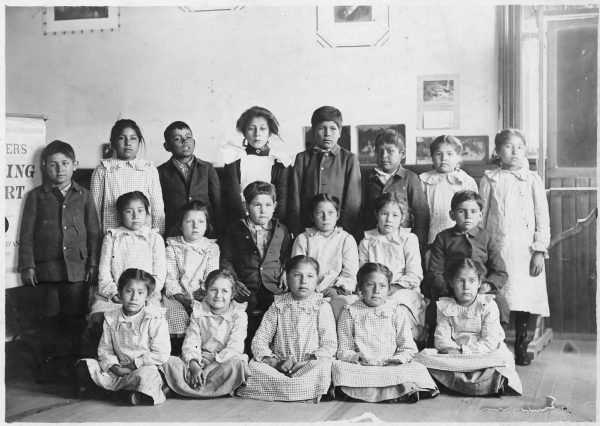Native American nations step up to protect their own
Citizen Potawatomi Health Services workers give out COVID-19 vaccinations on Jan 22. Photo courtesy Citizen Potawatomi Nation.
Native American tribes who have had their ancestral lands stolen, their reservations annulled, their culture trampled, say the COVID-19 pandemic was the breaking point.
“It just came down to, if it was going to happen we had to do it ourselves,” said Dr. Adam Vascellaro, chief medical officer for the Citizen Potawatomi Nation, located in Shawnee, about 45 miles east of Oklahoma City.
“So, a lot of us here just rolled up our sleeves and started working. Just chopping wood, carrying water every day and getting it done,” he said.
If the approximately 10,000 Oklahoma members of the Citizen Potawatomi Nation didn’t do it, they had learned the hard way it wasn’t going to get done.
Like Citizen Potawatomi, many tribes began implementing measures — like wearing masks — before Oklahoma established its first policy against the virus in March 2020. Oklahoma state officials have yet to establish a state-wide masking regulation.
But now, tribal health professionals are looking to the upcoming task of vaccinating all 39 tribes’ members across the state of Oklahoma.
Many tribes are following the same CDC protocols that guide the phases for the vaccination plan in Oklahoma. Some tribes, like the Osage Nation, are going against those recommendations by prioritizing their elderly first, said Ronald Shaw, CEO of the Osage Nation Health Services in Pawhuska, OK.
“Within our culture, we value the experience and the cultural knowledge of elders and we feel like that’s a higher priority than vaccinating healthy essential employees and so we’ve resequenced that,” Shaw said. Other than elders aged 55 and older, Osage’s priority groups also include healthcare workers and long-term care residents.
“We have had one drive-through vaccination event and vaccinated 100 people,” said Shaw. “We have vaccinated 850 individuals to date.” The tribe’s population in Oklahoma is about 6,500.
The Oklahoma tribal response is in contrast with many tribes across the country and the Navajo Nation, which has been ravaged by the pandemic and has seen almost 1,000 deaths and nearly 28,000 positive cases across its vast reservation in Arizona, New Mexico and Utah.
The Citizen Potawatomi Nation is one of the few tribes that owns one of the ultra-cold freezers required to store the Pfizer-BioNTech vaccine, Vascellaro said. Both of the tribe’s clinics have become hubs, storing thousands of doses for Indian Health Service’s Oklahoma City Area office, and for the Pottawattamie County Health Department. The tribe itself received a few hundred doses in their first shipment, which went to their healthcare workers first.
“So far, CPNHS (Citizen Potawatomi Health Services) has vaccinated a little more than 2,000 individuals,” Vascellaro said. “This includes two different first-dose vaccine drives where we administered more than 500 doses per day.”
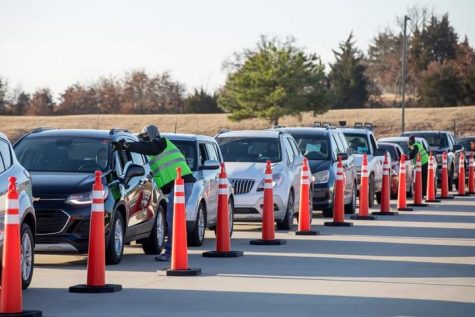
The Cheyenne-Arapaho tribe in Concho, about 40 miles west of Oklahoma City, received shipments of both the Pfizer and Moderna vaccine by Dec. 21 2020, equating to between 3,500 and 4,000 doses according to Derrell Cox of the tribe’s Department of Health. Many, if not most tribes in Oklahoma receive their vaccines from IHS offices.
Cox said the Indian Health Services service unit that serves some 8,500 Cheyenne-Arapaho members in Oklahoma and other Native American individuals is approaching 2,000 administered doses. That number includes the tribe’s frontline healthcare workers, department of health staff, community health representatives and elders.
During a mass vaccine weekend event at the Clinton Indian Health Service clinic, Cox said they administered over 400 doses per day over the course of that weekend. “The Clinton service unit of the IHS has vaccinated just under 14% of their patient population,” said Cox.
The state of Oklahoma has vaccinated 7.5 percent of the population according to the New York Times, but it doesn’t indicate whether that figure includes Native American vaccinations.
The Choctaw Nation located in Durant, OK, with about 84.500 Oklahoma members received its first shipments of Pfizer and Moderna vaccines on Dec. 14 and began inoculating healthcare workers Dec. 16. 2020, according to the Choctaw Nation Health Services Authority (CNHSA).
As of Jan. 24, the tribe has given nearly 4,200 individuals their first dose and more than 450 individuals their second shot — a mix of health services employees, essential workers, tribal members 60 and older and anyone in a 60+ household with a tribal identification card, the CNHSA said.
Some tribes in Oklahoma, like the Shawnee tribe in Miami, about 100 miles northeast of Tulsa, have had a harder time with vaccine rollouts because they are a smaller tribe — Shawnee has about 1,000 Oklahoma members — without the resources for their own health system. Tribes without this infrastructure rely on Indian Health Service clinics or other tribally supported clinics to get vaccinated.
Shawnee Chief Ben Barnes said that instead, his tribal members which are scattered across the state and nation, must deal with commuting long distances for a vaccine at a tribal clinic that may or may not cover the cost.
The Absentee-Shawnee tribe in Shawnee, OK received their first shipment of doses in early December from health service’s Oklahoma City Area office, according to executive director Mark Rogers.
The tribe entered Phase II of vaccine distribution this week, which prioritizes 55+ individuals with underlying conditions and Absentee-Shawnee tribe veterans, who perform tribal ceremonial burial ceremonies with honors for tribal veterans according to Rogers.
“We’ve received approximately 1,100 doses to date, with all doses either given or scheduled for immunization presently as per our Phased plan approach,” Rogers said. The tribe has about 2,000 members in Oklahoma.
The Wyandotte Nation in Wyandotte, OK received its first 100 doses of the Moderna vaccine Dec. 22, 2020 and immediately began inoculating health clinic staff, then patients according to the tribe’s laboratory director John Bearden. They have since administered 750 doses.
In addition to distributing the COVID-19 vaccine, Rebecca Brian, a clinic assistant for Wyandotte Nation, said Wyandotte community health representatives are also prioritizing giving their elders other vaccines for the flu or pneumonia, while they wait for the vaccine.
Bearden said the size of a tribe — Wyandotte also has only about 1,000 Oklahoma members — and their health system’s resources play a definite role in how fast vaccines are getting into tribal members’ arms.
“Even though we have a smaller workforce, we have a smaller population that we deal with. And we’ve been able to really be efficient because we’re small … it’s an advantage for us and it’s an advantage for our patients.”
Nancy Marie Spears, Cherokee Nation, is a reporter for Gaylord News, a reporting project of the Gaylord College of Journalism and Mass Communication.


